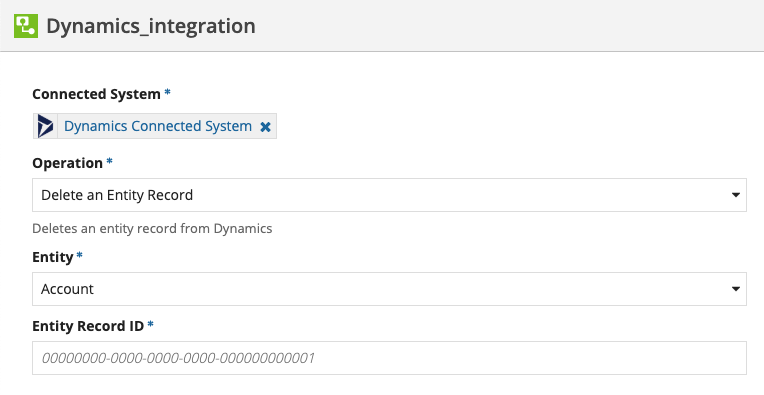Create, retrieve, update, and delete entity records in Dynamics Version 9 and Dynamics 365.
For information that pertains to all connected systems, see Connected System Object.
Two forms of authentication are available for Dynamics: Authorization Code (per user) and Client Credentials (single system login).
Each Appian user will be required to sign in to their Dynamics account to authenticate. You must provide users a way to authenticate using OAuth 2.0.
See Dynamics OAuth 2.0 Code Grant Flow for more details.
The Dynamics Authorization Code authentication has the following properties:
| Field | Description |
|---|---|
| Name | The name of the connected system. Use a name that will uniquely identify this connection to the external system. |
| Description | Supplemental information about the connected system that is displayed in the objects grid of some Designer views and when selecting the system in an integration object. |
| Redirect URL | Each connected system provides a callback URL that must be added to your Dynamics environment. In the Dynamics Setup portal, navigate to App Manager, and then find your App and select Edit. Add the callback URL in the field Callback URL. See Dynamics set up documentation for more details. |
| Instance URL* | Instance URL will be used for authorization. This URL is used to configure your integration object and when executing your operations. For example https://company-name.crm.dynamics.com |
| Application (Client) ID* | In the Azure portal, navigate to Azure Active Directory, select App Registrations, and then select your application. The Application (client) ID will be listed on this page. |
| Directory (Tenant) ID* | In the Azure portal, navigate to Azure Active Directory, select App Registrations, and then select your application. The Directory (tenant) ID will be listed on this page. |
| Client Secret* | In the App registrations page, select your application from the list, select Certificates & secrets, and then navigate to Client secrets. Add a new client secret and click Add. The generated key value is the Client Secret and must be copied before leaving this page. |
*This value is included in import customization files so that you can specify a different value for each environment.
Click AUTHORIZE to use the provided configuration information to authorize the designer in a new window. See OAuth 2.0: Authorization Code Grant for more details.
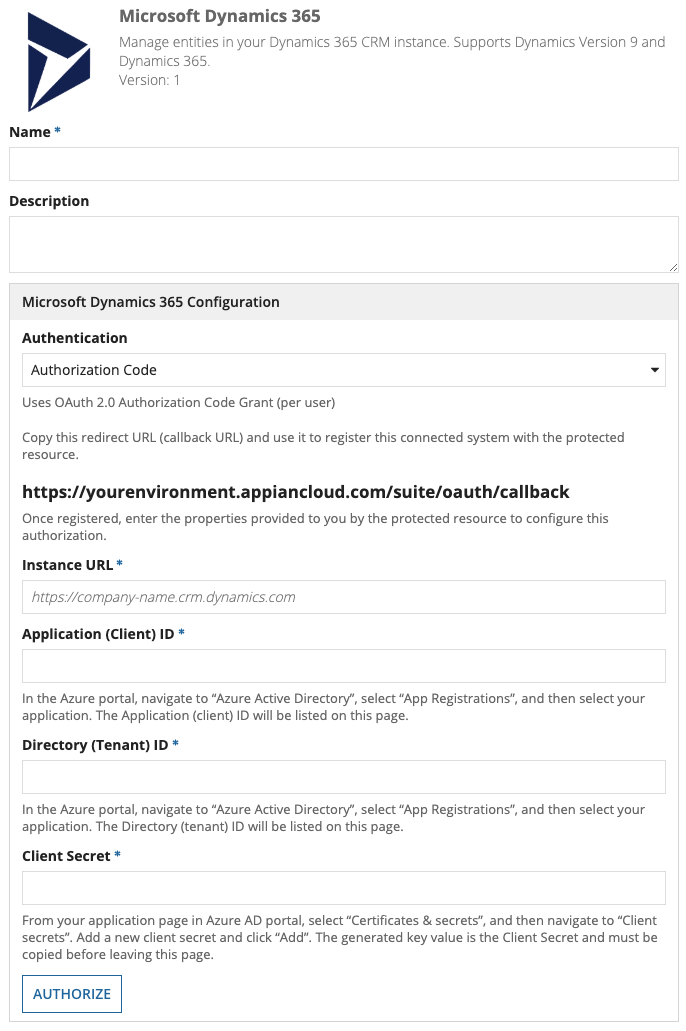
Provide a single Dynamics user's credentials to authenticate. All integrations will use a shared Dynamics service account. Individual Appian users do not need their own Dynamics accounts.
See Dynamics OAuth 2.0 Client Credentials Flow for more details. Microsoft community also provides a helpful Setup Guide.
The Dynamics Client Credentials authentication has the following properties:
| Field | Description |
|---|---|
| Instance URL | Instance URL will be used for authorization. This URL is used to configure your integration object and when executing your operations. For example https://company-name.crm.dynamics.com |
| Application (Client) ID | In the Azure portal, navigate to Azure Active Directory, select App Registrations, and then select your application. The Application (client) ID will be listed on this page. |
| Directory (Tenant) ID | In the Azure portal, navigate to Azure Active Directory, select App Registrations, and then select your application. The Directory (tenant) ID will be listed on this page. |
| Client Secret | From your application page in Azure portal, select Certificates & secrets, and then navigate to Client secrets. Add a new client secret and click Add. The generated key value is the Client Secret and must be copied before leaving this page. |
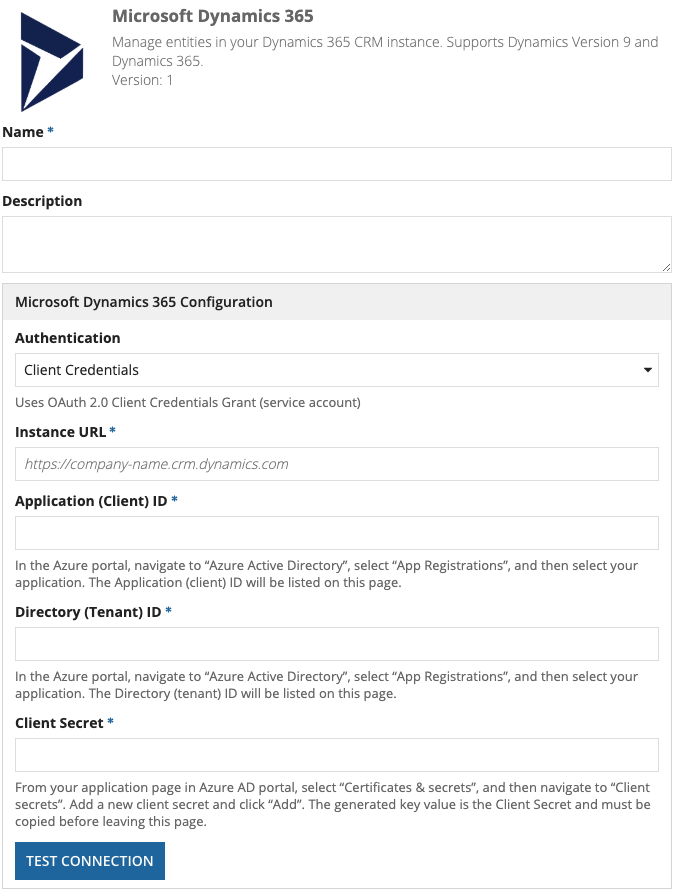
| Name | Description | Type |
|---|---|---|
| Create an Entity Record | Creates a new entity record in Dynamics | WRITE |
| Retrieve an Entity Record | Retrieves the data for a given entity record from Dynamics | READ |
| List Entity Records | Retrieves a collection of entity records from Dynamics that match the given query | READ |
| Update an Entity Record | Updates an entity record in Dynamics | WRITE |
| Delete an Entity Record | Deletes an entity record from Dynamics | WRITE |
Creates a new entity record in Dynamics.
The Create an Entity Record operation modifies data in Dynamics. To prevent the integration from making the same update twice, it can only be used in the saveInto parameter of an interface component or in a Web API. See Call an Integration for more information.
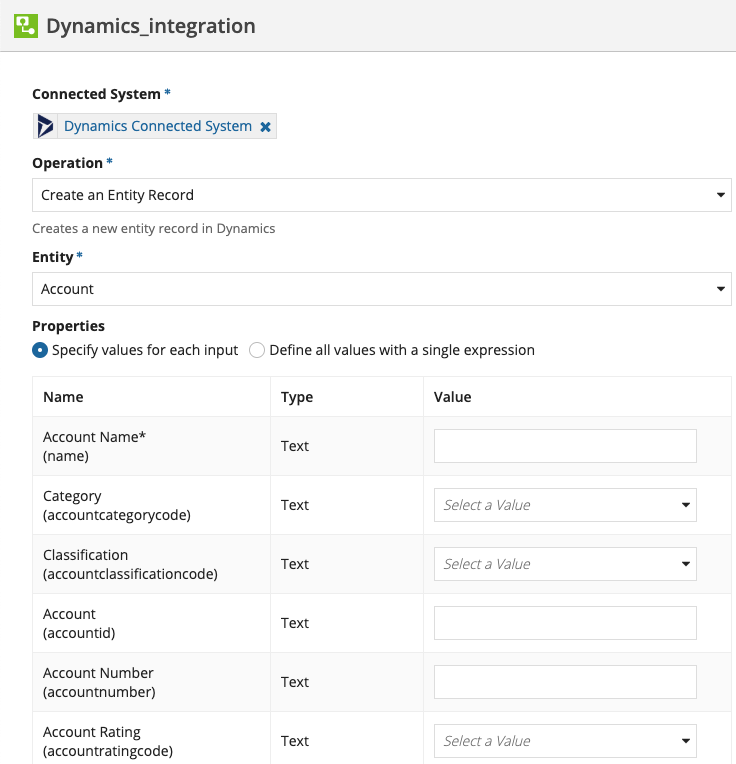
Retrieves the data for a given entity record from Dynamics.
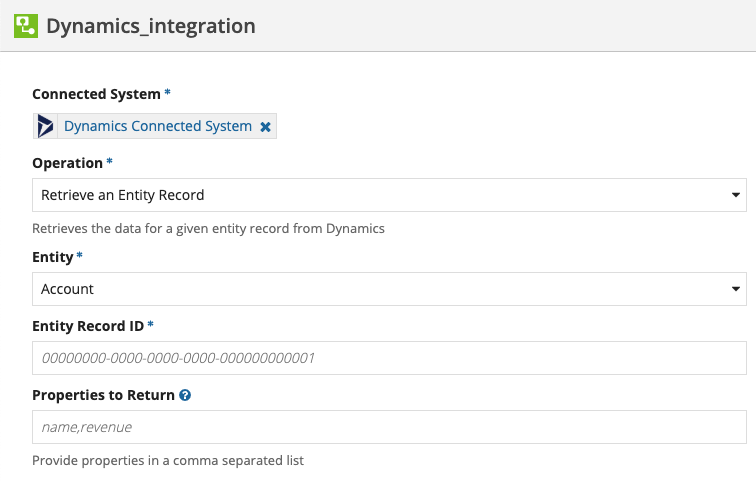
Retrieves a collection of entity records from Dynamics that match the given query. See Microsoft documentation for ODATA examples.
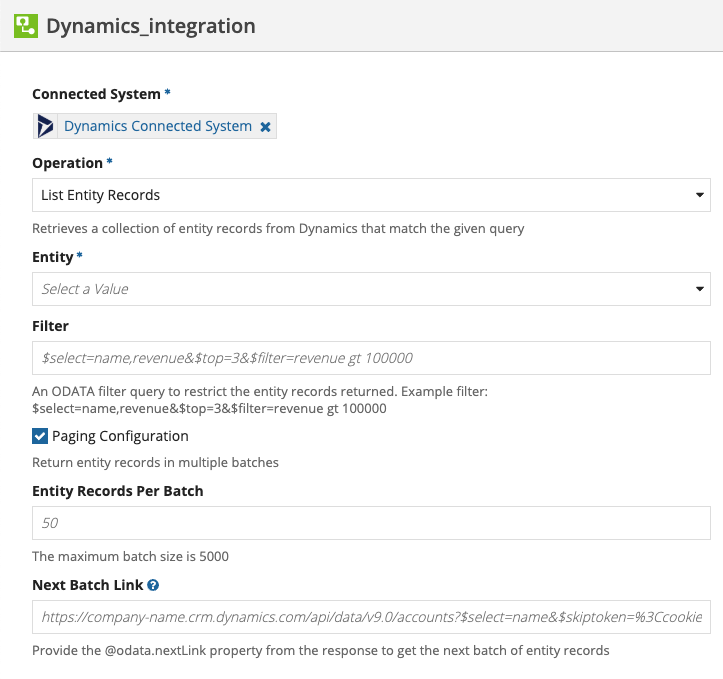
Updates an entity record in Dynamics.
The Update an Entity Record operation modifies data in Dynamics. To prevent the integration from making the same update twice, it can only be used in the saveInto parameter of an interface component or in a Web API. See Call an Integration for more information.
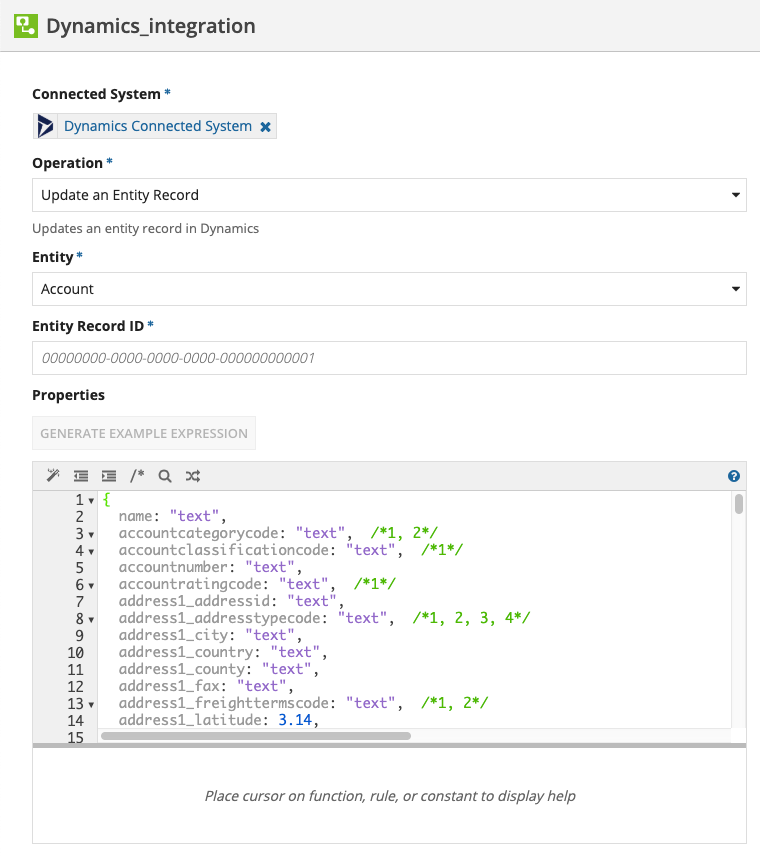
Deletes an entity record from Dynamics.
The Delete an Entity Record operation modifies data in Dynamics. To prevent the integration from making the same update twice, it can only be used in the saveInto parameter of an interface component or in a Web API. See Call an Integration for more information.
